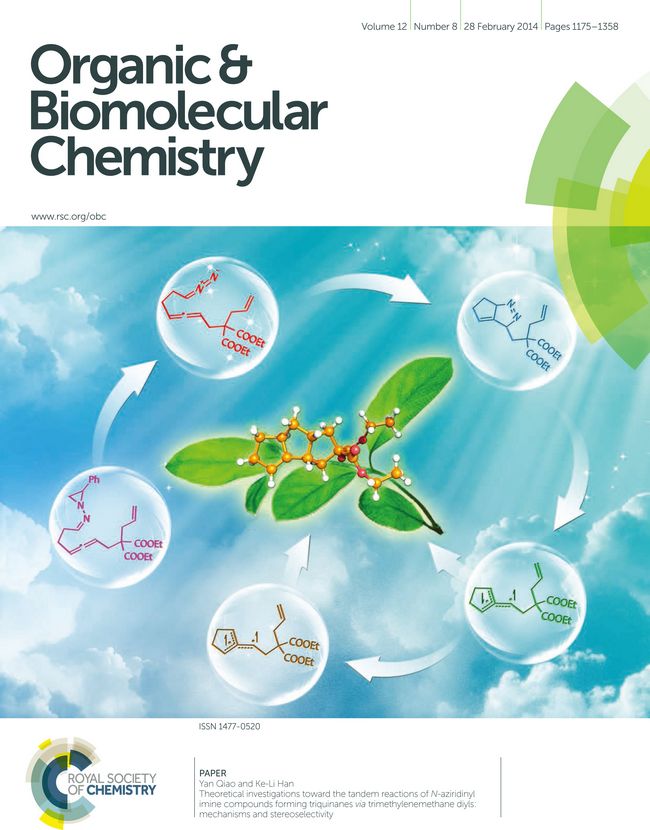Recently, a research team leading by Prof. Han Ke-Li in Dalian Institute of Chemical Physics, Chinese Academy of Sciences has made new progress in the reactions of N-aziridinyl imine compounds forming triquinanes. Their accomplishment “Theoretical investigations toward the tandem reactions of N-aziridinyl imine compounds forming triquinanes via trimethylenemethane diyls: mechanisms and stereoselectivity” was published on Organic & Biomolecular Chemistry (2014, 12, 1220-1231) as a cover article.
Linearly-fused triquinanes represent an important class of natural products, and thus they have attracted continuous attention from synthetic chemists. Lee et al. recently reported a direct tandem intramolecular cycloaddition reactions of N-aziridinyl imine compounds to give triquinane products at mild temperature 110?C. Nevertheless, the detailed reaction mechanism as well as the stereoselectivity remains elusive. This makes it difficult to rational design more effcient substrates to improve the yield and stereoselectivity. Prompted by these questions, Prof. Han Ke-Li et al. performed a theoretical investigation on this kind of reaction using density-functional theory. The calculated results reveal that the whole reaction consists of four steps: N-aziridinyl imine ring opening, 1,3-dipolar cycloaddition, extrusion of N2, and [3+2] cycloaddition. The extrusion of N2 can give rise to singlet and triplet trimetheneylmethane diyls, and the intramolecular [3+2] cycloaddition of singlet trimetheneylmethane diyl is the preferred reaction pathway since it requires relatively lower activation energy. In addition, it also show that there are two cycloaddition modes for singlet trimetheneylmethane diyl, producing two stereoselective products. And the calculated activation energies are in agreement with the experimental results. This work not only provides mechanistic insights into this important diyl trapping reactions, but also clarifies the stereocontrol factors. So it should be helpful for people to rational design more efficient reaction substrate.
In recently years, Prof. Han Ke-Li’s group has done a lot of theoretical researches on organic reactions, and series of achievements have been published on J. Org. Chem., Org. Biomol. Chem. et al.. ( By QIAO Yan/ DING Junxia)
